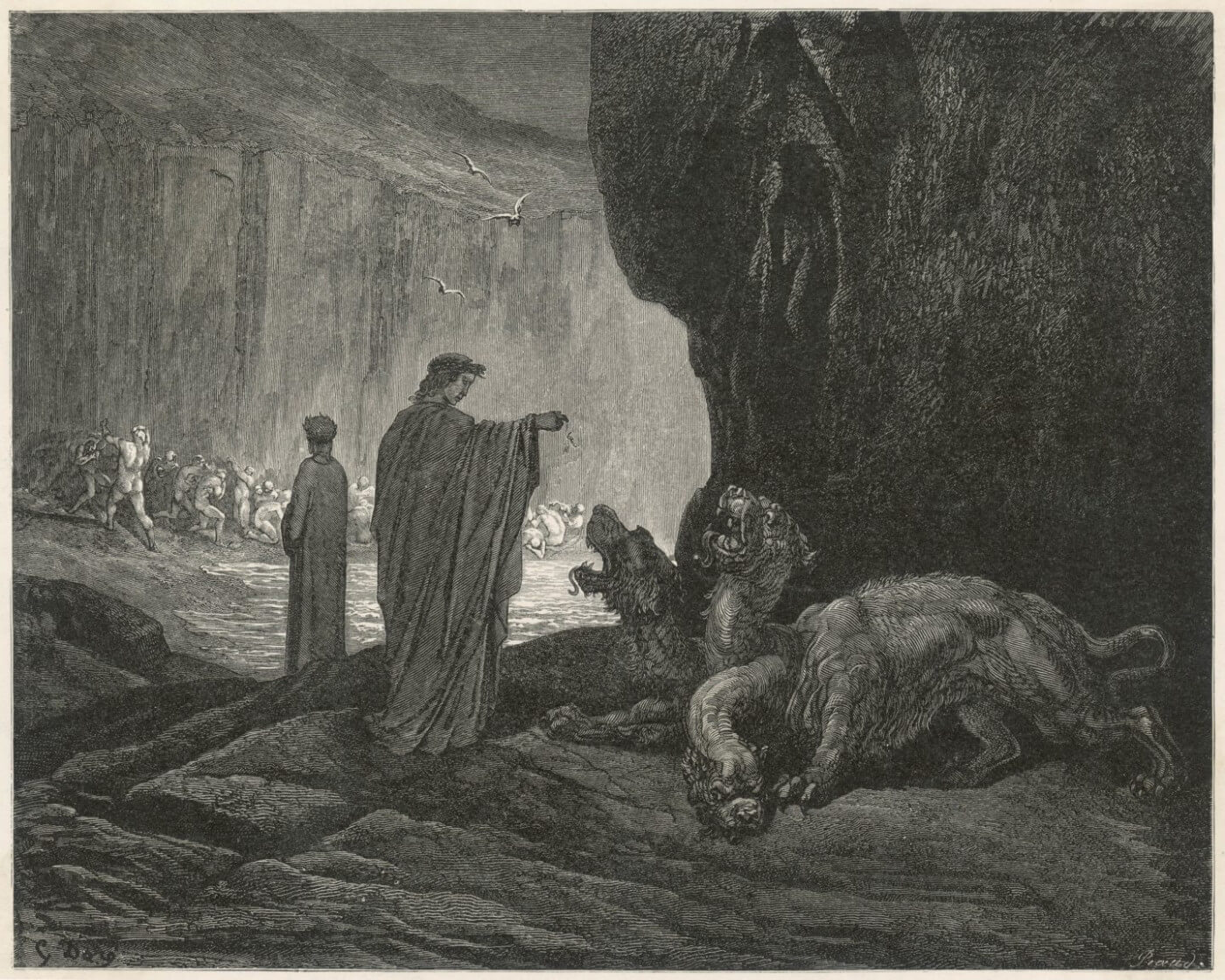Our story begins in the deepest realm—at the entrance to the great thrashing jaws of the Underworld. For it is said, as the Greek Myths go, the Underworld was guarded not by gates but by a monstrous beast known as Cerberus—the great three-headed watchdog.
It is said that he had the claws of a lion, the tail of a serpent, and a mane made of hissing, spitting snakes. His teeth, sharp and pointed, dripped with a poison known for leaving blooms of wolf’s bane in its wake. His three heads (though some claimed he had as many as fifty) represented a severe and sobering trinity—with some myths alleging they signified the past, the present, and the future of humanity.
Now, it’d be fair to wonder… where did such a creature come from?
The great guard-dog of hell was the offspring of the infamous monsters known as Echidna (a half-snake half-woman creature) and Typhon (a deadly dragon-like giant). From this unholy union came not only Cerberus, but a host of other multiheaded beasts—including the great monster Hydra, the serpent with an immortal head (for every head that was cut down, two more would grow in its place).
As guardian of the Underworld, Cerberus was often called the “Hound of Hades” as he lived to serve the great God of below. His main task was to prevent the dead from leaving—although in a few notable myths, that task would find itself reversed—keeping the living from entering the land of the dead.
But the most famous story featuring our three-headed hound, is the one of Hercules—the demigod tasked with accomplishing twelve impossible labors by his king. And it was in the last of these labors that we see our great and monstrous Cerberus—for the twelfth labor was to retrieve the great hell-hound and bring him up to earth.
Now, the king was so sure that this task was truly impossible, and counted on Hercules failing.
The demigod would not only have to survive his trip to the Underworld, but he’d have to subdue the great beast that guards it and bring his body back to earth—without killing the dog (or himself) in the process.
But Hercules, not one to turn down an “impossible” feat, pushed the impossibility aside and set his sights on the Underworld and the beast that guarded it.
Once Hercules entered the land of the dead, he immediately sought the counsel of Hades—knowing the God’s graces were the only way he could complete his task with any success. Accepting this, Hades agreed to strike a deal with the young demigod: if Hercules can subdue Cerberus without the use of any of his weapons, then Hades would permit him to take the dog to earth long enough to prove the task was complete.
And so, dropping his weapons, Hercules agrees—turning to face the great beast of hell, and his last impossible task.
But what happens next is a rush and blur. For in the great flurry of action and fighting and claws and fists, Hercules manages to wrap his arm around one of Cerberus’ heads—choking him in a great rush of his strength, and finally submitting the great creature of the dead.
With his victory in hand, Hercules brings the defeated Cerberus up to earth to prove to the king that he has completed his final impossible labor.
And Cerberus, shortly after, is returned back to his home in the Underworld—where he resumed his faithful and eternal post. And that dear reader, is the story of Cerberus—the beast of Hades, the watchdog of the dead, and the three-headed hound of hell.
Divination Altar Cloth

$ 11.00
Our divination altar cloth was designed for use with a pendulum and is an easy tool for tapping into the other side of the veil. Made from a soft velvety fabric, measures 16 x 16 inches.… read more










